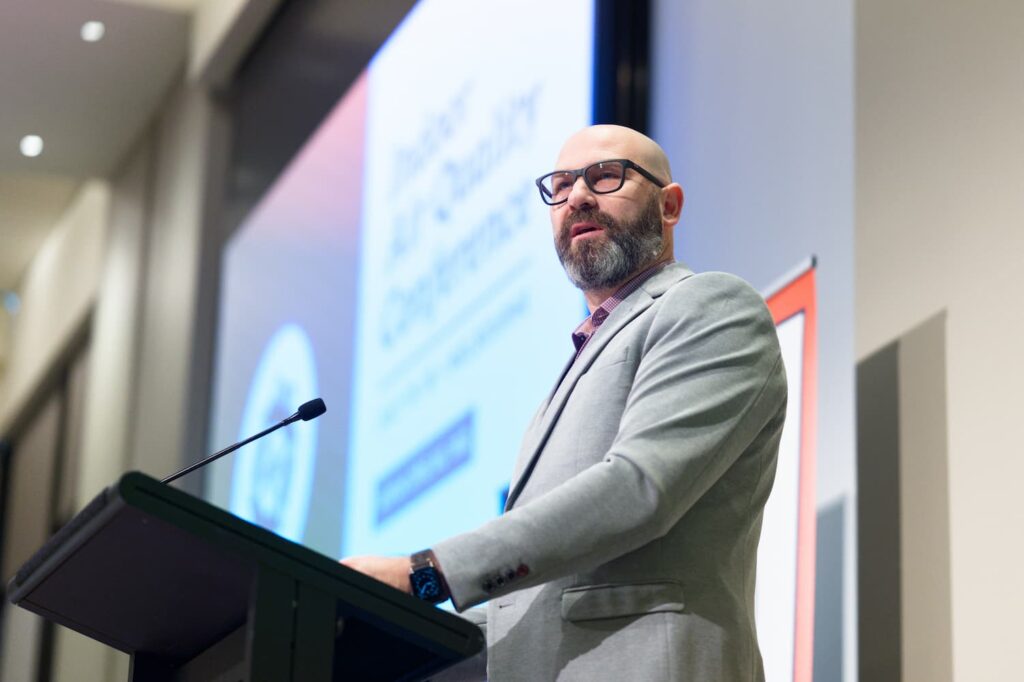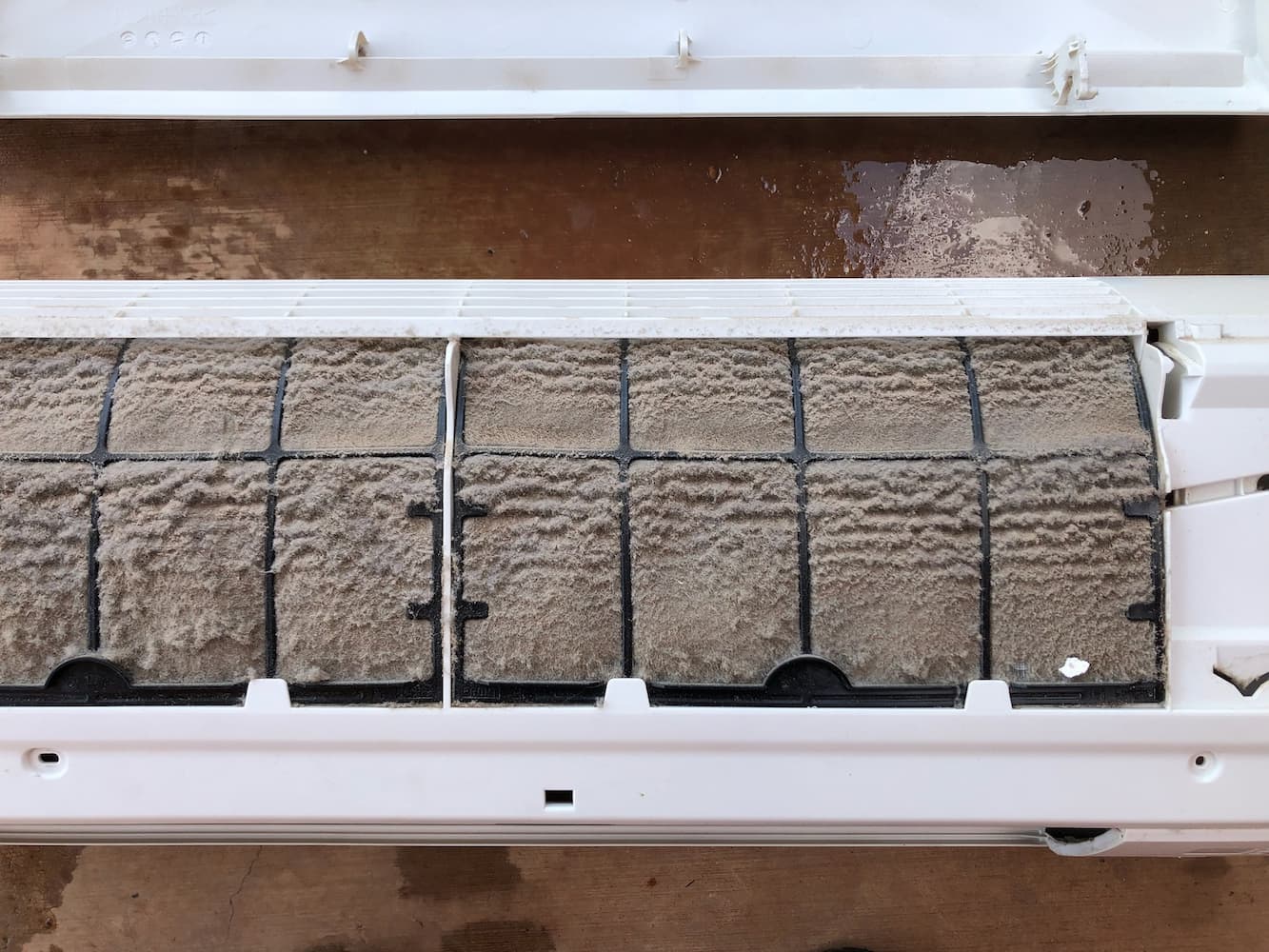Wet washing air conditioners is a task that requires specialist skills and equipment. As HVAC&R News discovers, untrained operators are common in the industry, and the consequences of substandard work are potentially deadly.
The mould growing inside their air conditioner is the last thing most people would be thinking about when trying to stave off the heat of another scorching summer. But people like Stuart Fewster know all too well the dangers of what lies beneath the cover of your typical household split system.
Fewster’s life changed completely in 2012 after he inhaled mould during a routine air conditioner service – though it took many years before his condition was identified. It led him and other concerned colleagues to do something about it.
A life-changing experience
Fewster started cleaning air conditioners in 2012, not knowing much about the harm that can be caused by what grows in them. In 2014, health issues began to emerge. He was flown to Perth, 3,000km from where he lives, to see specialists. Then, in 2016, he was diagnosed with bacterial pneumonia. He had to fly to Newcastle to see a specialist in bacterial diseases – one of only two in Australia.
“I had no blood flow on the left side of my neck, and that caused major problems through my body,” says Fewster. “The bacteria was actually attacking my cells and my arteries, and I just couldn’t function.”
The treatment required two years on three different types of antibiotics. Although things started to improve, Fewster still didn’t feel quite right. Then, early in 2023, after many more tests, he was diagnosed with toxic mould syndrome, otherwise known as chronic inflammatory response syndrome (CIRS). He is still being treated today.
“The biggest thing for me is what my kids and my wife had to go through,” says Fewster. “I couldn’t play with my kids, because I just physically couldn’t, and a lot of the day-to-day jobs fell on my wife, and it affected her immensely.”
According to Fewster, 25 per cent of the population in the world carry a gene that makes them more susceptible to mould if they’re exposed to it.
So, given the risks mould poses, how can we safely and cost-effectively remove it from air conditioners?
Wet washing: a neat solution
Wet washing is a technique for cleaning air conditioners designed to create minimal intrusion and mess. When done properly, it removes the mould that accumulates inside split systems and can greatly improve heating and cooling performance, all while reducing energy consumption.
After more than 35 years as an HVAC&R technician, Peter Jenkinson turned his attention to air conditioning wet wash services in 2011. He is now the director of Outback Cleaning Products and a passionate advocate for improving the wet wash industry.
“The wet wash industry was born due to the need to find a cost-effective way to clean air conditioners without the need to remove the indoor head unit,” Jenkinson says.
“The work involves removing the covers, setting up a catchment bag and spraying a cleaning agent on the coils and fan, then pressure washing the air conditioner.
“The equipment was designed to be able to clean the air conditioner in position with little to no mess.”


Jenkinson notes that wet washing requires specialist equipment, not just off-the-shelf pressure washers.
“A lot of pressure washers used by untrained cleaners are not fit for purpose; they don’t have the correct volume of water to push the dirt all the way through the coils,” he says. “They end up pushing the dirt into the coils, which causes it to become blocked and creates conditions for moulds to grow faster.”
This, as HVAC&R News has discovered, is one of many issues facing in an expanding and unregulated industry in which many “professionals” have never been properly trained.
The wild west of wet washing
Given how serious the consequences of incorrectly wet washing an air conditioning unit can be, it might come as a surprise to consumers that many operators don’t have training or work licences.
“The air conditioning wet wash industry is unregulated and has seen a huge growth of untrained operators enter the market,” Jenkinson says. “The issue is that many operators have just watched a YouTube video and tried to copy the process without understanding the need to follow a strict guideline.
“They can go online and buy a machine and a bag and put up an ad and start the business of cleaning splits without any knowledge of hygiene and the risks that they are facing.”
Jeremy Stamkos, M.AIRAH, is an active member of AIRAH’s Indoor Air Quality Special Technical Group. He agrees that there are major problems in the wet wash industry.
“The most significant issue I see is the lack of compliance when it comes to maintaining hygienic or clean HVAC systems,” he says.
“As there is generally no penalty for non-compliance, a significant number of air conditioning systems remain contaminated to the point where they pose a risk to occupant health. This includes within buildings where more susceptible populations spend time, such as schools, hospitals, aged car facilities, kindergarten, and childcare centres.”


More harm than good
With no regulation in place, businesses are offering vastly different levels of service under the banner of “cleaning”.
“We are seeing prices from $50 to $280 per clean,” says Jenkinson. “The issue is the standard of clean that the customer is receiving. Some businesses just wash the filters and wipe the covers over and don’t wash the coils or fan, while others don’t take the covers off to do a complete wet wash. The biggest issue is the consumer has no idea what they are paying for versus what they are getting.”
As Jenkinson points out, “cowboy” HVAC cleaners don’t only shortchange customers on cleaning – they often cause more harm than good.
“When cleaning the barrel fan, they ‘free spin’ the fan, allowing the dirt on the fan to lodge into the back of the coils and cause airflow issues,” Jenkinson says.
Certain cleaning agents are especially problematic. They might work well in some household applications, but can have disastrous effects when used to clean air conditioners.
“Some businesses use bleach as the cleaning agent, which produces a toxic gas when applied to aluminium,” Jenkinson says. “We have even seen people use toxic oven cleaner as the cleaning agent.
“The use of unsuitable chemicals can have respiratory and health effects on the end-user. Corrosive chemicals can also significantly harm the coil and shorten the unit’s life.”
Raising the bar
Fewster felt that something could be done to prevent other people going through what he went through. He spoke to two colleagues who saw him go through the whole ordeal, and they resolved to establish regulations or a governing body. This is how the Air Conditioning Wet Wash Association (ACWWA) was born.
“We set to work on a massive task,” Fewster says: “three people, not a lot of money, and we’ve set up this association. And we’re to the point now where we just need some help to get us over the line so we can get this awareness out into the general public.”
ACWWA is pushing for improved training and standards within the wet wash industry in Australia.
“ACWWA was set up as an association to provide the industry with a best practice industry guideline for wet wash cleaners,” says Jenkinson, who is also an active member of ACWWA. “We also aim to educate the consumer about the need to clean their air conditioners.”
“We have produced a best practice guideline book – which is available to ACWWA members – as well as a consumer information page to educate the consumer. We are working with various organisations to share our knowledge to make the industry is aware of issues.”
Stamkos agrees that education and regulation are key to improving the situation.
“One of the main ways to improve the situation is for stakeholders to be compliant with minimum inspection and maintenance/cleaning intervals set forth by AS/NZS 3666.2 and the AIRAH HVAC Hygiene Best Practice Guideline,” he says. “I believe that until government starts regulating that HVAC systems be maintained to hygienic levels, we will not see a significant increase in HVAC compliance.”
For people like Fewster who have suffered the effects of mould inhalation first-hand, this regulation can’t come fast enough.
“We need to get some regulations or a government body around indoor air quality and air conditioning,” he says. “I believe we can prevent anyone else having to go through what I and my family have gone through.”
Learn more
ACWWA has developed wet wash guidelines for ductless split systems and has shared them with AIRAH’s Indoor Air Quality STG for input.
For more information, visit www.acwwa.org.au
 Nick Johns-Wickberg
Nick Johns-Wickberg


Leave a Reply to Jordan Cahill Cancel reply